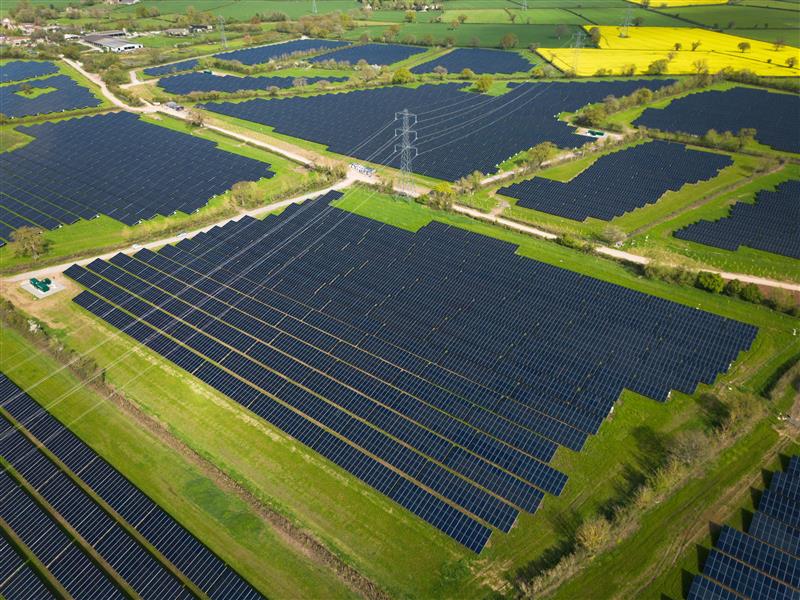
On 1 April, between 12:30 and 13:00, Great Britain secured a new maximum solar generation record of 12.2GW.
The new record comes as March 2025 was deemed by the Met Office as the sunniest March since records began in 1910, with 185.8 hours of sunshine throughout. This was capitalised on by the nation’s solar sector, which recently surpassed the 18GW threshold for installed capacity.
According to Sheffield Solar live PV tracker, whose data is used for forecasting by the National Energy System Operator, the UK came close to breaking the record on Sunday, 30 March, with peak generation reaching 11.9GW.
Although weather patterns dictate solar PV generation, for reference, 1 April 2024 recorded a peak generation capacity of 5.71GW, whilst the peak for all of 2024 reached 11.5GW on 2 June.
For 1 April, the Sheffield Solar live PV tracker indicated that solar PV generated a cumulative total of 87.6GWh of renewable energy over the day.
Although utility-scale solar PV power plants up and down the country are likely to have supported the bulk of generation capacity, distributed generation, such as rooftop solar PV, is expected to have played an integral role in the record, aided by strong installation figures in 2024.
The Microgeneration Certification Scheme, which certifies renewable energy products and installers, recently revealed that between January 2024 and January 2025, 200,010 home solar PV installations and 22,667 home battery storage systems were carried out. This was attributed to falling costs.
Research from Solar Media Market Research found that around 20% of the 2.3GW of solar deployed across 2024 came from residential rooftop installations, with commercial rooftop installations contributing another 20%.
Positive policy signals set to bolster installed solar PV capacity
Solar PV in the UK has grown significantly in the past year, largely due to positive policy signals from the Labour government that have supported investors in the country’s energy transition, in contrast to the Conservatives unpredictable and often lack of support.
This has been reflected in public support for clean energy generation technology, with recent research from trade body Solar Energy UK revealing that 77% of the UK public supports solar development in their local area.
Additionally, according to research from Solar Media Market Research, the UK is expected to add between 3GW and 3.5GW of new solar capacity in 2025.
Utility-scale solar developments are also expected to rise. The precedent had been set in December 2024 with Josh Cornes, an analyst at Solar Media Market Research, having said that 30 new solar applications, totalling 1.1GWp of capacity, were added to the UK planning system in December 2024, with only November 2023 outshining it.
Jess Ralston, an analyst at the Energy and Climate Intelligence Unit, hailed the new solar generation record, highlighting that each new solar module installed helps to reduce the reliance on fossil fuels.
“Every new solar panel installed in the UK makes us less dependent on gas imports, which is good for our energy independence as well as for stabilising energy bills given the sun offers up its power for free,” Ralston said.
“As we install more solar and build more wind turbines, our reliance on gas will fall, as will our vulnerability to the likes of Putin. Volatile gas prices cost us an extra £140 billion since the crisis began, so there are benefits for taxpayers and billpayers alike.”
Our publisher, Solar Media, will host the next edition of the UK Solar Summit on 1-2 July 2025 at the Leonardo Royal Hotel London Tower Bridge in London. You can book your ticket here.

